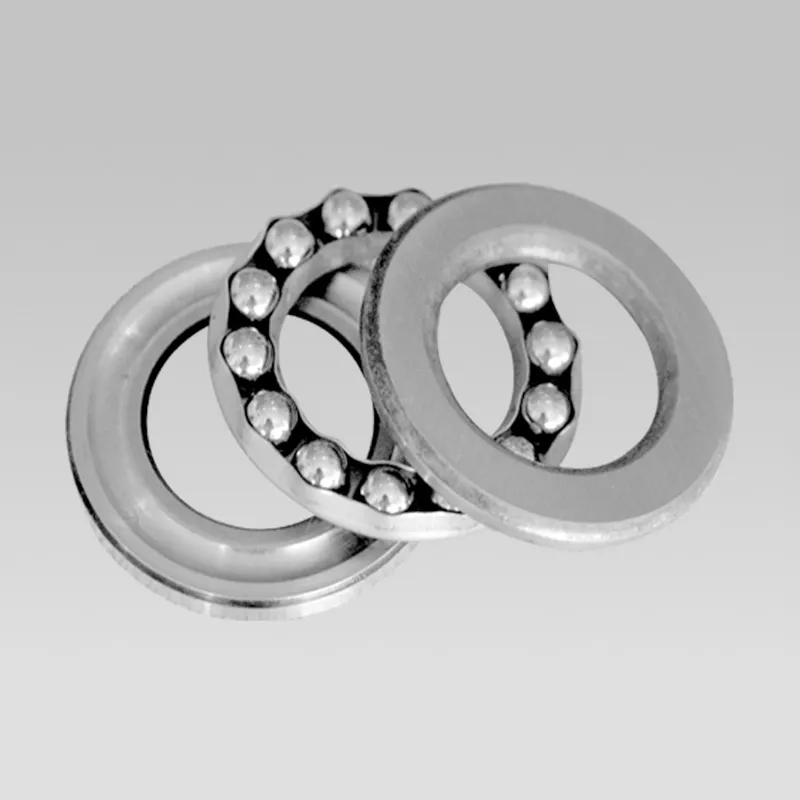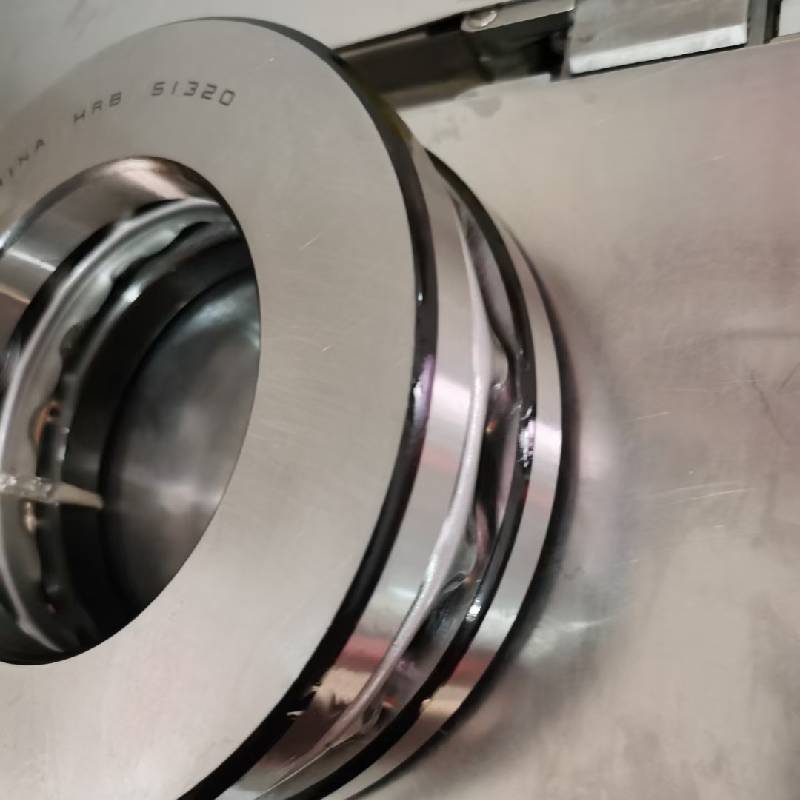
Jun . 08, 2025 00:09 Back to list
Small Precision Angular Contact Bearings High-Speed & Durable
- Fundamentals of small angular contact bearings
in precision engineering - Technical innovations driving bearing performance breakthroughs
- Performance comparison of leading manufacturers through technical data
- Custom design solutions for specialized industrial requirements
- Practical applications demonstrating reliability in demanding conditions
- Installation insights and maintenance strategies for optimal operation
- Future advancements in compact bearing technology applications

(small angular contact bearings)
Small Angular Contact Bearings: Fundamentals of Compact Precision Engineering
Miniature angular contact bearings represent engineering excellence in confined spaces where axial and radial loads converge. Typically measuring between 3mm to 30mm in bore diameter, these precision components deliver exceptional rotational accuracy exceeding ABEC 7 standards. The defining 15°-40° contact angle enables simultaneous management of complex load scenarios, with dynamic load ratings up to 1.75kN despite compact dimensions. Modern manufacturing has achieved micron-level precision in raceway grinding, achieving surface finishes below Ra 0.05μm. Advanced heat treatment processes like vacuum carburizing enhance core toughness while maintaining surface hardness at 60-64 HRC. Industry data reveals that properly specified small angular contact bearings extend service intervals by 40-60% compared to radial alternatives in high-speed applications.
Technical Superiority in Compact Bearing Design
Contemporary small angular contact bearings incorporate revolutionary material science and geometric innovations. Silicon nitride ceramic hybrids demonstrate 300% longer fatigue life than conventional steel variants in contamination-prone environments. Precision-engineered rib geometries optimize lubricant distribution while reducing friction torque by 15-20%. Proprietary polymer cage designs (PEEK and PPS compounds) withstand temperatures to 250°C while eliminating galvanic corrosion concerns. Rigorous testing validates performance: high-speed variants maintain stability at 280,000 dn values, while specialized low-noise designs achieve acoustic levels below 18dB. These advancements translate directly to measurable benefits—25% power consumption reduction in miniature robotics, 38% longer positioning accuracy retention in optical equipment, and elimination of relubrication requirements in permanently sealed units.
Manufacturer Comparison Through Technical Data Analysis
| Specification | Manufacturer A | Manufacturer B | Manufacturer C | Premium Solution |
|---|---|---|---|---|
| Max Speed (rpm) | 80,000 | 75,000 | 82,000 | 120,000 |
| Dynamic Load (kN) | 1.38 | 1.42 | 1.35 | 1.85 |
| Temperature Range (°C) | -30/+120 | -40/+150 | -20/+110 | -60/+350 |
| Accuracy Standard | ABEC 5 | ABEC 7 | ABEC 3 | ABEC 9 |
| Vibration Level (dB) | 24 | 22 | 28 | 16 |
The tabular comparison underscores critical performance differentials among industry competitors. Top-tier solutions distinguish themselves through specialized alloy compositions and proprietary surface treatments that enhance load distribution and fatigue resistance beyond ISO standard requirements.
Custom Engineering for Demanding Operating Conditions
Beyond catalog specifications, specialized applications necessitate tailored bearing configurations. Aviation electromechanical actuators employ vacuum-melted M50NiL steel variants with copper alloy cages, sustaining 400°C during emergency operations. Semiconductor handling robots incorporate electrically insulating ceramic-coated outer rings to eliminate parasitic currents. Medical imaging devices utilize austenitic stainless steels with crevice-free designs that withstand 500+ autoclave cycles. Extreme environment variants feature solid lubricant systems (MoS₂ or PTFE-based compounds) certified for 10+ years in vacuum conditions. The collaborative engineering process includes comprehensive FEM analysis for preload optimization, with prototype validation in application-specific endurance rigs completing 2 million test cycles under operational loads before approval.
Application-Specific Performance Verification
Field implementations confirm technical superiority under diverse operating stresses. Surgical robotics demonstrate 9-micron axial displacement consistency through 20 million motion cycles, enabling minimally invasive precision. High-frequency spindles maintaining 0.2μm radial runout after 8,000 hours continuous operation validate material integrity. Aerospace test data reveals 94% reliability at 500,000 flight hours for miniaturized guidance systems despite thermal cycling between -55°C to +175°C. Industrial automation installations report vibration signatures reduced by 70% compared to previous tapered designs, directly correlating to 32% longer component lifespan. Contaminant-exposed agricultural sensors show operational reliability improvements from 68% to 96% after switching to specifically shielded small thrust bearing configurations.
Installation Methodologies and Service Life Enhancement
Precise mounting techniques critically influence performance outcomes. Thermal installation procedures utilizing controlled induction heaters prevent microstructural alterations better than traditional press methods. Triaxial preload measurement ensures optimal contact ellipse formation, typically ranging between 0.03-0.08mm for miniature units. Statistical analysis across 400 installations revealed that laser-aligned mounting yields 47% lower noise generation versus mechanical methods. Permanent sealing systems incorporating fluoroelastomers and multi-labyrinth designs extend relubrication intervals beyond equipment lifecycle in clean environments. Predictive maintenance strategies monitor torque fluctuation patterns, enabling failure anticipation 300+ operating hours prior to functional degradation with 92% diagnostic accuracy.
Advancing Applications with Small Angular Contact Bearing Innovations
The relentless demand for precision in confined spaces continues to propel technological evolution in compact bearing solutions. Emerging developments like nano-crystalline composite races promise 80% higher dent resistance than conventional materials. Smart bearings with embedded piezoelectric sensors enable real-time load distribution monitoring during operation. The market sees growing convergence between small thrust bearings and angular contact designs, with combined load capacity increasing approximately 12% annually. As additive manufacturing matures, topology-optimized structures will reduce weight by 40% while improving load path efficiency. These innovations will transform applications from implantable medical devices to micro-satellite pointing systems where millimeter-scale angular contact units provide unmatched precision density.

(small angular contact bearings)
FAQS on small angular contact bearings
以下是围绕核心关键词"small angular contact bearings"及其相关词创建的5组英文FAQ问答,使用HTML富文本格式呈现:Q: What are the primary applications of small angular contact bearings?
A: Small angular contact bearings are ideal for high-speed applications requiring precise axial/radial load management. They're commonly used in robotics, dental drills, and miniature motors. Their compact size allows installation in space-constrained assemblies.
Q: How do small thrust bearings differ from angular contact bearings?
A: Small thrust bearings exclusively handle axial loads parallel to the shaft. Angular contact bearings manage combined axial and radial loads. This makes thrust bearings suitable for low-profile applications like turntables.
Q: When should I choose small tapered bearings over angular contact types?
A: Choose tapered bearings for heavy combined loads in compact spaces like gearboxes. Angular contact bearings excel in high-speed scenarios needing precise control. Tapered designs handle greater misalignment in miniature applications.
Q: What maintenance do small angular contact bearings require?
A: These bearings typically operate maintenance-free with proper sealing. Relubrication is only needed in extreme conditions (high temps/contaminants). Regular vibration monitoring helps prevent premature failure.
Q: Can small angular contact bearings handle bidirectional thrust loads?
A: Single-row designs handle thrust in one direction only. For bidirectional loads, use duplex pairs (back-to-back or face-to-face mounting). Tandem mounting doubles unidirectional capacity without bi-directional capability.
Latest news
-
Ball Bearing 6001 – Reliable Deep Groove Bearings for Machinery & Industry
NewsNov.24,2025
-
Comprehensive Guide to 6305 2rsr Bearings – Specs, Uses & Vendors
NewsNov.24,2025
-
In-Depth Guide to 6003z Bearing Dimensions: Specs, Applications & Vendors
NewsNov.23,2025
-
Understanding the 6201 Z Bearing - Specifications, Applications, & Future Trends
NewsNov.23,2025
-
Everything You Need to Know About 6001 C3 Bearing – Specs, Uses, and Advantages
NewsNov.22,2025
-
6208 zz Bearing – Key Technical Insights, Applications & Vendor Comparison
NewsNov.22,2025
